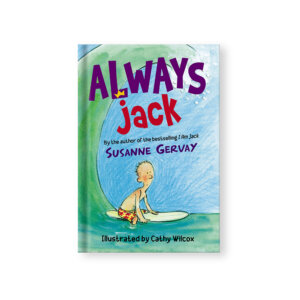Introduction to YouTube Shorts
YouTube Shorts is a relatively new feature introduced by the platform aimed at capitalizing on the growing trend of short-form video content. These videos are typically 60 seconds or less in length, designed to entertain and engage viewers quickly. The rise of platforms such as TikTok and Instagram Reels has significantly influenced the popularity of short videos, prompting YouTube to create its own version to attract and retain content creators and viewers alike.
Unlike traditional YouTube videos, which may range from several minutes to hours in duration, YouTube Shorts are designed for rapid consumption. They allow creators to share engaging content in a concise, impactful manner, catering to the decreasing attention span of modern audiences. This format encourages creativity and innovation, as creators must effectively communicate their message within a limited timeframe. Furthermore, the ultra-short duration fosters an environment where both new and experienced creators can experiment with different content styles without significant time investment.
The popularity of YouTube Shorts has surged, reflecting a broader shift in user preferences towards quick, easily digestible content. The algorithmic support provided by YouTube allows Shorts to reach vast audiences, increasing the chances for creators to grow their subscriber base rapidly. This aspect makes Shorts an attractive option for content creators who aim to enhance visibility and engagement. Moreover, as more users flock to this format, it presents an opportunity to monetize their content and earn passive income from a platform that continues to evolve and innovate.
In essence, YouTube Shorts is more than just a trend; it is a fundamental shift in how video content is consumed, providing numerous opportunities for creators to connect with audiences and broaden their reach in the digital landscape.
Understanding the YouTube Shorts Fund
The YouTube Shorts Fund represents a significant initiative by YouTube aimed at promoting engagement and creativity within the Shorts format. This fund, established to support content creators, allocates a considerable financial resource to individuals who create compelling and engaging short videos. With billions of views across the platform, Shorts has emerged as a popular feature, allowing users to discover and share bite-sized videos swiftly.
Eligibility for payouts from the YouTube Shorts Fund is determined by various criteria. Creators must consistently upload original content that complies with community guidelines. Additionally, they need to be based in countries where the fund is active. The fund is not tied to the standard monetization eligibility, thus making it accessible to emerging creators who may not have met the traditional requirements for YouTube monetization.
To apply for funding, creators are typically informed through the YouTube dashboard if they qualify based on their content performance. Once notified, they can follow the outlined procedures to apply for financial incentives. Successful applicants receive financial rewards ranging from hundreds to thousands of dollars, depending on the performance of their Shorts. This approach not only incentivizes creativity but also enhances visibility for lesser-known creators who may have valuable and innovative perspectives to share.
The impact of the YouTube Shorts Fund cannot be understated. It encourages video creation, leading to a diverse array of content contributions to the platform. By offering monetary rewards, YouTube motivates creators to experiment with new ideas, thereby enriching the Shorts library and fostering a vibrant community. Ultimately, the fund catalyzes monetization opportunities for creators while simultaneously expanding the overall reach of the platform itself.
Building a Compelling Shorts Strategy
Creating an effective YouTube Shorts strategy is essential for maximizing viewer engagement and enhancing the potential for monetization. To begin with, identifying trending topics is crucial. Regularly listening to your audience, analyzing popular hashtags, and researching competitive channels can help you pinpoint what’s currently resonating in the community. Leverage tools like Google Trends and social media platforms to find popular topics that align with your content style.
Next, employing creative video formats will set your Shorts apart in a crowded landscape. Short-form content thrives on creativity; therefore, experimenting with various styles such as tutorials, behind-the-scenes looks, or storytelling can capture the attention of viewers. Utilize engaging visuals, captivating captions, and dynamic audio to enhance the storytelling aspect of your Shorts. A well-crafted hook at the beginning of your video is particularly effective in capturing audience interest within the first few seconds.
In addition to content format, it is essential to appeal to your target audience. Understanding demographics, interests, and viewing habits allows for tailored content creation. Analyze your analytics to determine peak viewer times, which types of content generate the most engagement, and which audience segments are responding best. Creating a content calendar that considers these factors can help ensure consistent delivery of engaging videos that keep viewers returning for more.
Moreover, integrating calls to action within your Shorts encourages viewer interaction and boosts engagement rates. Encouraging viewers to like, comment, or share can significantly enhance your content’s visibility on the platform. By focusing on trending topics, engaging formats, and a clear connection with your target audience, you can construct a compelling Shorts strategy that not only entertains but also drives a pathway to monetization.
Using Affiliate Marketing in YouTube Shorts
Affiliate marketing is a performance-based marketing strategy where individuals earn commissions by promoting other companies’ products or services. This approach has gained popularity among content creators, especially those using platforms like YouTube Shorts, where short-form content can quickly engage a large audience. Integrating affiliate marketing into YouTube Shorts requires understanding the dynamics of both the platform and the marketing technique.
To effectively implement affiliate marketing in YouTube Shorts, creators should first select appropriate products or services that resonate with their audience. It is essential to choose affiliate programs that align with their content niche, ensuring that the promoted items provide real value to viewers. For instance, if a creator focuses on fitness, partnering with health-related brands or wellness products can create authentic connections and drive engagement.
When creating content, it is advantageous to craft authentic and compelling narratives that highlight the benefits of the chosen products. This can involve showcasing the usability of a product in real-time or demonstrating its effectiveness. Visual storytelling is particularly effective in YouTube Shorts, where creators can leverage quick cuts and engaging visuals to capture attention.
Best practices dictate that transparency with the audience is crucial. Creators should always disclose their affiliate relationships, either verbally or in the video description, to maintain trust and comply with advertising regulations. Clearly stating that links may result in commissions helps to foster honesty and transparency, which can enhance viewer loyalty.
Lastly, consistent engagement and interaction with viewers can significantly boost the effectiveness of affiliate marketing efforts on YouTube Shorts. By responding to comments and addressing questions about the promoted products, creators can foster a community that is more likely to convert viewers into customers, thereby generating passive income through affiliate marketing.
Leveraging Sponsorships and Brand Collaborations
One effective avenue for monetizing YouTube Shorts is through sponsorships and brand collaborations. As content creators generate engaging and appealing short videos, brands increasingly seek to tap into their audience reach to promote products and services. Establishing a partnership with brands can be mutually beneficial, providing creators with financial support while offering brands valuable exposure to targeted demographics.
To successfully engage with brands, content creators should first assess potential partnerships that align with their channel’s theme and audience interests. It is essential to maintain authenticity in brand choices, as this creates a sense of trust among viewers. Creators can start by identifying brands they genuinely admire or that they regularly use. Reaching out involves crafting a professional pitch that highlights the creator’s unique value proposition, including information about their audience demographics, engagement rates, and previous successful collaborations.
When negotiating deals, clarity is imperative. Creators should outline their expectations regarding compensation, content deliverables, and any creative freedom they desire. This negotiation process should aim to establish a win-win scenario where both the brand and the creator can achieve their goals. Providing creators with creative flexibility can often lead to more engaging sponsored content, which resonates better with the audience. It’s beneficial to present a few creative ideas on how the brand can be integrated into the video, making the collaboration appear seamless rather than intrusive.
Finally, successful collaborations involve maintaining transparency with viewers. Creators should clearly disclose sponsorships or brand partnerships to maintain credibility. By adhering to these guidelines, creators can forge productive relationships with brands that enhance their content’s monetization potential while preserving their authenticity and viewer trust.
Ad Revenue and YouTube Partner Program Eligibility
Entering the YouTube Partner Program (YPP) is a crucial step for creators aiming to monetize their YouTube Shorts. The eligibility criteria are designed to ensure that creators produce quality content while maintaining a strong audience engagement. To qualify for YPP, creators must have at least 1,000 subscribers and accumulate a minimum of 4,000 watch hours over the past 12 months preceding their application. Alternatively, creators can also become eligible through other methods such as having 10 million valid public shorts views in the last 90 days, which is particularly relevant for those focusing on short-form content.
Once accepted into the program, creators have the opportunity to earn ad revenue from their videos, including YouTube Shorts. However, it is essential to note that monetization works slightly differently for short-form content than for traditional long-form videos. While longer videos provide more extensive ad placements and potentially higher revenue per view, Shorts are integrated as part of a different advertising strategy. Ads shown on Shorts often appear before or during the video, and the overall revenue model is still being refined by YouTube creators and marketers.
The key to maximizing ad revenue lies not only in meeting eligibility requirements but also in creating engaging, sharable content. Creators should focus on producing high-quality shorts that resonate with their audience. Additionally, optimizing video titles, descriptions, and tags can enhance visibility and reach, which in turn can lead to increased view counts and, subsequently, more ad revenue. As the platform continues to evolve, the potential for earning passive income through YouTube Shorts remains promising, provided that creators understand and navigate the monetization landscape effectively.
Promoting YouTube Shorts for Increased Monetization
In the realm of digital content creation, effective promotion is crucial for maximizing the monetization potential of YouTube Shorts. By leveraging multiple platforms, creators can enhance visibility and drive traffic to their Shorts. A strategic approach to cross-promotion is key. Social media platforms such as Instagram, Twitter, and Facebook serve as valuable tools for sharing short video content. Posting clips or behind-the-scenes footage on these platforms not only raises awareness but also entices viewers to visit your YouTube channel.
Engaging with online communities is equally important when aiming to promote YouTube Shorts. Participating in forums and social media groups that focus on niche topics related to your content allows creators to share their Shorts with audiences who are already interested in similar themes. It’s essential to approach these communities authentically, contributing valuable insights while subtly introducing your content. This method fosters a genuine connection, which can lead to increased viewership and enhanced monetization opportunities.
Furthermore, collaborating with other content creators can significantly expand one’s reach. Partnering with fellow YouTubers or influencers, particularly those whose audiences align with your target demographic, enables cross-promotion of each other’s Shorts. By hosting joint projects, challenges, or shout-outs, both parties can tap into each other’s subscriber bases, thereby driving more viewers to their respective channels. Such collaborations are mutually beneficial, facilitating increased exposure and potentially leading to higher revenue through ad placements and affiliate marketing.
In conclusion, effectively promoting YouTube Shorts through cross-promotion on social media, engaging with communities, and collaborating with other creators is essential for boosting visibility. By strategically implementing these methods, creators can significantly increase traffic to their Shorts, optimizing their chances of earning passive income through the platform.
Analyzing Performance and Adjusting Strategy
Understanding the performance of your YouTube Shorts is crucial for optimizing your content and increasing potential income. YouTube Analytics presents a robust framework for assessing how well your Shorts resonate with the audience. The primary metrics to pay attention to include views, watch time, audience retention, and engagement rate. Each of these indicators provides valuable insights into the effectiveness of your content and audience interaction.
For instance, views measure the reach of your videos, while watch time reflects how long viewers are staying engaged with your content. High audience retention rates suggest that your Shorts hold viewer interest, signaling successful content strategies. Conversely, a low retention rate may indicate that changes are necessary, whether that means adjusting the content structure, improving storytelling, or enhancing visual appeal. Engagement metrics, like likes, comments, and shares, further reveal how viewers are interacting with your content.
Once these metrics are evaluated, interpreting the data becomes vital. Look for patterns or trends that highlight both strengths and weaknesses in your content. Perhaps certain themes or formats consistently outperform others, or specific posting times yield better engagement. This information is not merely descriptive; it is prescriptive, guiding you to refine your content strategy to better meet viewer expectations and preferences.
Ultimately, the key to monetizing YouTube Shorts lies in adaptability. As you receive performance data through YouTube Analytics, develop a responsive content strategy that evolves based on these insights. By regularly analyzing performance and making informed adjustments, you will enhance the potential for earning passive income through your YouTube Shorts, ensuring that your content continues to attract and engage viewers effectively.
Conclusion: The Future of YouTube Shorts Monetization
As the digital landscape continues to evolve, YouTube Shorts has emerged as a significant platform for creators looking to monetize their content. The importance of adapting to the shifting dynamics of video consumption cannot be overstated. With a growing audience on Shorts, monetization is not just a possibility; it is an emerging opportunity. The integration of new monetization features and the expanding creator fund illustrate YouTube’s commitment to enhancing earnings potential for its users. Additionally, the platform’s evolution drives creators to innovate and engage their audiences in novel ways.
The future of monetizing YouTube Shorts will likely involve a blend of strategies aimed at maximizing reach and engagement. Creators should focus on producing high-quality, engaging content that resonates with their target audience. This includes using analytics tools provided by YouTube to understand viewer preferences and adapt accordingly. Furthermore, fostering community interaction through comments and shares can bolster visibility and increase monetization potential.
Staying informed on policy changes and new opportunities within YouTube is crucial for creators aiming to earn passive income. With the fast-paced nature of digital content, being proactive about trends and algorithm updates allows creators to remain competitive and relevant. Incorporating creative marketing strategies, collaborating with other creators, and diversifying income streams will contribute to a sustainable revenue model. Ultimately, as YouTube continues to grow and adapt, so too must its creators, ensuring they are well-positioned to capitalize on the future of YouTube Shorts monetization.















